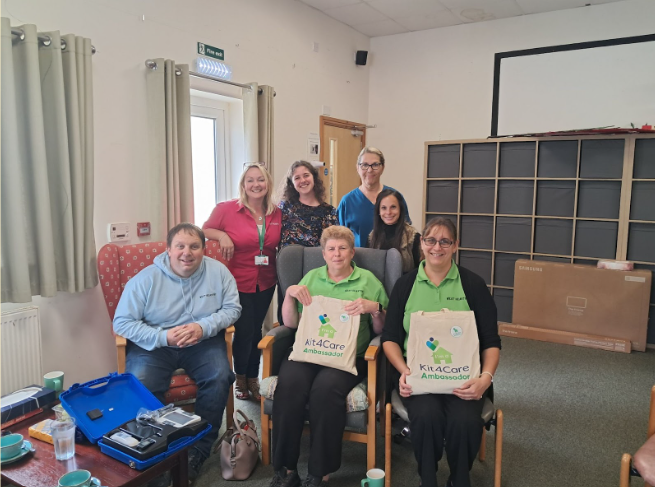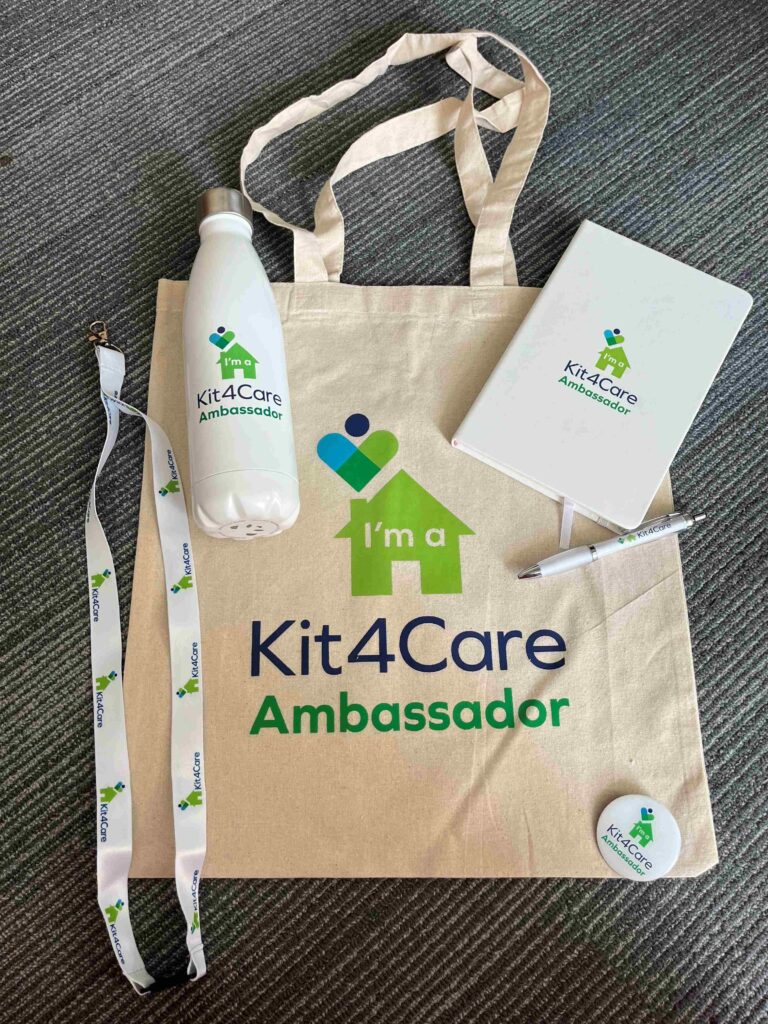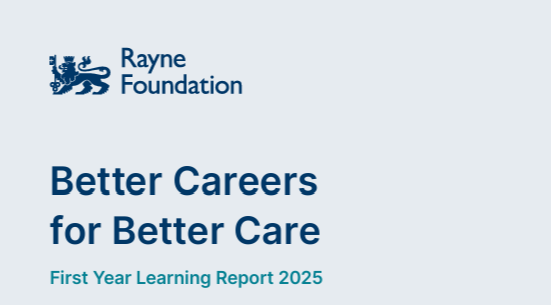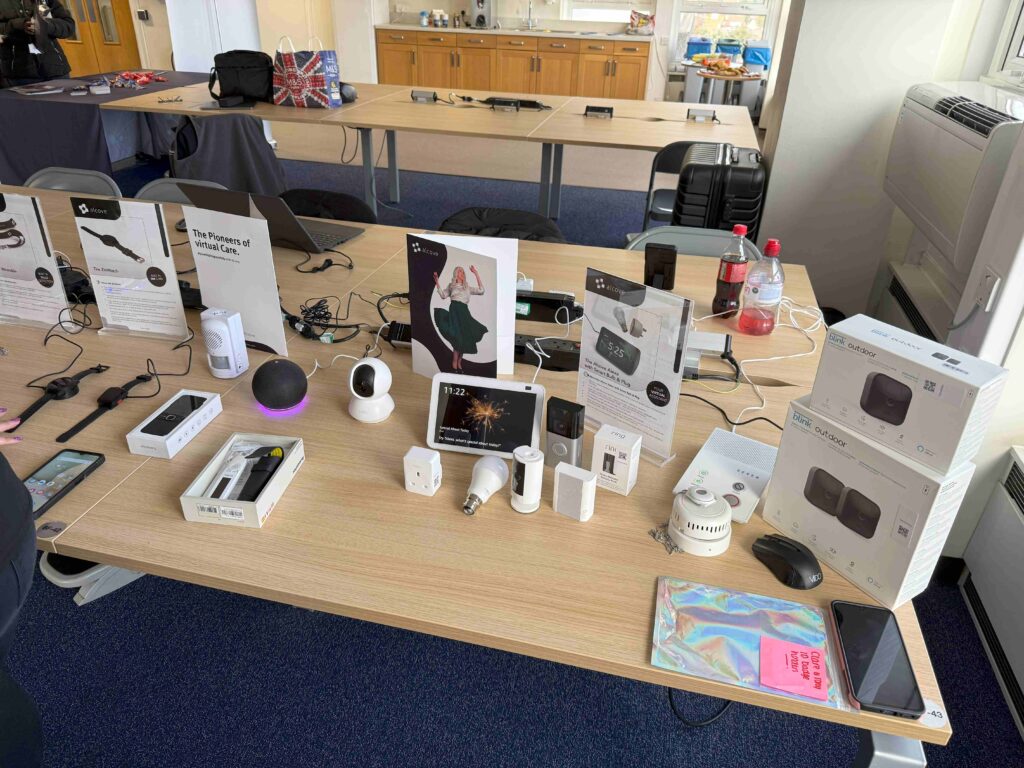Celebrating Impact: From Kit4Care Pilot to Award-Winning Innovation



In the final chapter of our Kit4Care blog series, we reflect on the impact, learning, and legacy of a pilot that empowered care professionals, improved outcomes — and just won a major award.
As we reach the final chapter in our Kit4Care blog series, we’re thrilled to share not only our evaluation findings—but also some incredible news; Kit4Care has been named Outstanding Contribution to the Community at the South West Business Awards!
This recognition is a testament to the power of collaboration and innovation in care. The Kit4Care project has enabled domiciliary care workers to use remote monitoring technology to detect early signs of deterioration—like sepsis and chest infections—leading to faster interventions, better outcomes for clients, and more empowered care professionals. The award celebrates the significant impact this work has had on people’s lives, local care systems and the frontline teams delivering care every day.
After 18 months of planning, delivery and evaluation, this final blog dives into what we’ve learned—about collaboration, professional confidence, and the positive ripple effects felt by those receiving care.
To give a sense of scale and momentum: Our journey began in August 2023 with a stakeholder kick-off. This was followed by months of co-design, training and building relationships. The 5-month trial period (June–Nov 2024) saw care workers using Whzan Blue Boxes to conduct proactive health checks in the community.
Key findings
We have broken down the key findings of our work into three categories:
- Collaborative working – reflecting on how it developed and improved
- Care professionals – reflecting on the difference this pilot made to their work and roles
- Homecare recipients – reflecting on the benefits experienced
Collaborative working
A cornerstone of the Kit4Care project was enabling stronger collaboration between health and social care colleagues. We were fortunate to work with a self-selected group of highly engaged participants, who welcomed the introduction of co-designed forums—such as local delivery groups to shape escalation pathways and weekly huddles to build connection across the project.
Our evaluation found that while these forums were positively received in principle, operational pressures often made regular attendance difficult. Even among motivated participants, staying consistently engaged proved a challenge—highlighting a critical lesson: if it’s hard to stay connected in a bottom-up, voluntary initiative, it’s likely to be even harder in top-down mandated programmes.
This was especially evident in primary care, where several stakeholders struggled to maintain involvement due to competing demands. Though some practices and PCNs gave initial support, they were later unable to sustain engagement—and their insight was notably missed. This led to varying levels of awareness across GP practices; while some were briefed and involved, others were unaware that a pilot was even underway.
These gaps underscore a vital truth: people make the difference in any digital or innovation programme. Technology alone won’t deliver change—it must be supported by strong relationships, clear communication and embedded local support. Without face-to-face contact and continuous engagement at the frontline, even the most promising innovations can fail to gain traction.
What Care Professionals Told Us: Confidence, Recognition and a Clear Willingness to Do More
What stood out clearly in our interviews with care professionals was their openness—and in many cases, enthusiasm—for using remote monitoring technology. Many saw the introduction of the Whzan Blue Box not as an additional burden, but as an opportunity: a chance to upskill, to take on a more proactive role in monitoring health, and to make better-informed decisions.
Some staff brought previous experience from clinical settings and welcomed the chance to use those skills again in their current roles. Others saw the training as adding value to their work and identity as care professionals. All were open to incorporating the technology into their routines—and all completed the training with commitment.
In a sector where social care staff often report feeling undervalued compared to their NHS colleagues, we wanted to ensure that participants felt recognised. That’s why every staff member received a certificate and gift bag upon completing their training. The reactions we received—genuine appreciation, pride, and positivity—made clear that these small gestures mattered.
Importantly, staff told us that having access to objective measurements like temperature, pulse and oxygen levels helped guide their decision-making. It boosted their confidence and gave them peace of mind when acting on health concerns. Several also noted that it made conversations with clinicians easier—thanks to the NEWS2 score, they now had a common language and evidence to refer to.
Of course, the pilot wasn’t without its teething issues. Some GP practice staff members weren’t aware of the project, or equipment experienced glitches—adding pressure to already busy days. But despite these setbacks, every single care professional interviewed was in favour of continuing remote monitoring. They could clearly articulate the benefits to their clients, their own practice, and to the broader health system.
The message was unanimous: remote monitoring made their work feel more impactful, more respected, and more aligned with their care values.
Homecare recipients
“I’m cautious with tech but do understand why we need it.”
Recipients of homecare have expressed differing views on the use of technology in care. While some understand how technology can enhance their care and are open to welcoming it as part of their care routine, others have expressed mistrust around technology and felt a particular concern about losing the human element in their care. This highlights that while the introduction of the technology and care can be safe and effective, this won’t matter if the care recipient is not having a positive experience with it.
The experience with health checks was also on a spectrum despite all care recipients describing the relationship with their care provider as incredibly trusting.
A small number of people have perceived the regular health checks an inconvenience. In some instances, the sudden introduction to regular readings has unsettled clients, who feared that their health was declining. After discussion with the care provider, the frequency of the readings was adjusted to suit the clients’ needs. This highlights the importance of the upfront communication between care workers and care recipients in order to convey the purpose of the offer.
The majority of clients have expressed indifference towards the health checks, with the view that they didn’t feel “bothered” by the health checks if it wasn’t taking away from their usual care routine. Care recipients demonstrated a high level of trust in their care providers and were in agreement to receive regular health checks if their provider would see this as beneficial. These findings suggest that more needs to be done to move beyond people being passive around their care and developing their patient activation, which research has been shown to produce better outcomes.
This was demonstrated in the project as some care professionals even spoke about some of their clients who had fully embraced the regular health checks into their routine and were actively asking for them to be performed regularly. The routine seemed to resonate particularly well for clients who were experiencing anxiety around their health and wellbeing and felt reassured by having their measurements taken regularly.
In summary, clients have generally expressed a preference for:
- Having dedicated times for health checks and at a frequency that is suitable for their individual needs
- The results of the readings and next steps to be communicated to them clearly by the care professional
- For readings to be automatically shared with their GP so they can review and discuss these at any appointments with their GP
Benefits
When evaluating the Kit4Care project, three areas stood out where the model has made a positive impact on the delivery of homecare.
“[Because of the regular health checks from my care worker], I don’t have to go to the doctors as much, as I don’t like going”
- Deterioration is detected more quickly than usual and clients are receiving quicker access to treatment. The escalation process could be accelerated by up to 24 hours, as seen with two clients: one with a chest infection, who received a prescription of antibiotics within the same day; and another client with low blood pressure, whose regular readings highlighted that their medication needed to be adjusted, which was dealt with on the same day. In both scenarios, identifying the risk at an earlier stage prevented the clients from deteriorating further, including reducing the likelihood of a fall.
- Care professionals having access to objective measurements reduces the number of calls they make to the GP or ambulance services. A benefit of having access to the technology is that care professionals are able to validate any cause for concern. Their escalation route is determined by an algorithm calculating the level of risk based on a client’s individual readings, which greatly enhances their ability to determine whether to escalate to a medical professional.
- Lives can be saved! As a result of the NEWS2 score, which indicates the level of risk based on an individual’s vital signs, urgent cases can be prioritised because the NEWS2 risk ranking is mutually understood by health and social care professionals. During this project, a client was admitted to hospital following a fall, based on having a high and rising temperature. The ambulance prioritised their call based on this information and the individual was admitted to hospital immediately. Following their admission, sepsis was detected for which they received imminent treatment and have since recovered well.
Our recipe for success
Evaluating this project has offered many opportunities for reflection and it got us thinking about the most important “ingredients” that make up a successful “recipe” for a project like Kit4Care.
What’s next?
Reading this, you might now wonder – and what’s next?
Unfortunately, we haven’t been able to secure funding to support providers to continue using the Blue Boxes and to further embed the new process into their routines. This means that each provider, together with their local GP practices or PCN, has to decide whether they are able to allocate funds to the continued use of the equipment.
Meanwhile, we are on the lookout for further funding sources, which would enable us to support providers to continue the remote monitoring and to scale the approach into other regions.
With these words, we are concluding our six-part blog series, during which we took you on the journey and shared the different phases, successes and challenges of the Kit4care project with you. We hope that the blogs have sparked some interest for some of you, or provided some inspiration to do a similar trial in your locality.
Should you wish to talk to us about the details of our work, please don’t hesitate to get in touch. We are happy to chat and share any information and learnings that we think would be helpful to consider when replicating this model of remote monitoring in domiciliary care settings.
All the best
John and Pia



